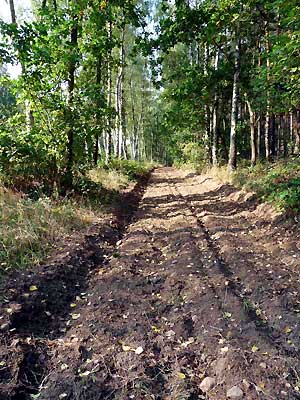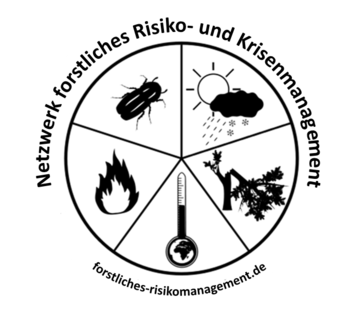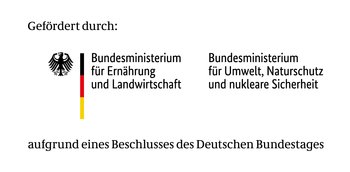The areas in Germany most at risk from forest fires are northeast Germany, the eastern part of northwest Germany and the Upper Rhine lowlands. In these regions, extensive pine forests are accompanied by an easily flammable groundcover and a dry internal forest climate. 40 year old pure pine stands are at particular risk of fire because of their low-set, highly flammable branches. In extremely dry years the forest fire danger increases.
Most fires are caused by human activities. Various measures can be employed to prevent forest fires. In the end, a combination of different measures results in the most successful prevention.
To prevent the spread of an existing fire or to transform an aerial fire into an easier to extinguish ground fire by depriving it of readily flammable material, silvicultural and technical measures need to be constructed or introduced in areas with high forest fire risks. A number of silvicultural measures can only achieve their preventative or damage-minimising effect after several years.
Tree species make-up and forest conversion
The risk of forest fire decreases as the proportion of deciduous trees increases and with the conversion of a pine monoculture into a mixed broadleaved stand. However in areas with low precipitation and very poor soils it is not possible to reduce the proportion of pines and hence the long term forest fire risk.
The underplanting and supplementary planting of site specific broadleaved species in suitable pine forest stands is an important forest fire prevention objective. Most of the deciduous trees which grow in Germany retain sufficient moisture, even in dry summers, to prevent aerial fires developing in such stands or shelterbelts. Birch is an exception as the bark and green foliage can burn during extreme droughts. Furthermore at an early stage Birch develops into a sparse stand which can be colonised by easily flammable grass and heather.
Red oak has proven to be appropriate for relatively poor sites. If a fire goes through a Red Oak shelterbelt, the trunks can be coppiced the following winter to resprout lushly the next year. Sessile Oak can resprout with coppice shoots if it is coppiced after a ground fire.
More fastidious species such as Beech or Sessile Oak can be planted on better sites. Beech is best introduced by underplanting in existing stands. In this way grass growth is suppressed and the foliage isolates the burnable material on the ground for that in the canopy layer. Species such as Lime, Maple or European Hornbeam are suitable for underplanting on better sites.
Shelterbelts und fire breaks

Fig. 1: Forest fire break with harrowed fuel break. (Photo: N. Kessner)
Along with silvicultural measures, classical preventative measures such as constructing fire breaks including vegetated fire breaks, protective strips and fuel breaks also help.
A vegetated fire break is a strip of land about 100–300 metres wide which is overgrown with fire retarding (broadleaved) trees (see above), shrubs and fire resistant groundcover plants. A vegetated fire break should convert an aerial fire into an easier to control ground fire or hinder the spread of a ground fire or draw the energy out of a rolling barrage of fire. To protect large forest areas, particularly in areas with an “A” forest fire danger classification, these breaks are interconnected in a system. In such systems, the main fire break runs from north to south – as the wind predominantly blows from the west or east during a fire. Secondary fire breaks, which run between the main breaks in an east-west direction, can hinder the course of a fire or reduce the fire risk.
A protective strip is a 20 to 30 metre wide strip of tree covered land from which easily flammable material (twigs, shrubs, dry or deadwood) has been removed. Weak and dry trees are removed and remaining pines are delimbed to a height of 4 metres. A ground fire is prevented from igniting the canopy layer by the small amount of flammable material and a lack of fire bridges. These protective strips are made on one or both sides of streets or railway tracks and the fuel breaks described below.
Fuel breaks are strips of land over a metre wide which have been cleared of flammable material and the upper humus layer. They run along one or both sides of main roads, streets or railway tracks. A fuel break prevents a ground fire spreading. The fuel break is maintained by repeating harrowing or ploughing during the fire season. When the forest fire danger is above level 2 in Mecklenburg-West Pomerania, fire breaks are similarly made by ploughing next to agricultural fallow areas and harvested fields.
A fuel break of up to 15 metres must be constructed and maintained along railway tracks, motorways and state highways within forested areas (> 5 ha) in areas classified as forest fire danger “A” in Mecklenburg-West Pomerania. Along other roads and in areas with a B and C danger classification, fuel breaks are constructed and maintained as determined by the forest authority (M-V Waldbrandschutzverordnung § 6 u. 7 Mecklenburg-West Pomerania Forest Fire Protection Regulation).
Learn more about forest fire prevention
Forest Crises Management Advisory Guide
Back to the main page of the Forestry Crisis Management Advisor Guide: Overview of the different topic collections
Back to the article overview in the: Forest fire Topic Collection


